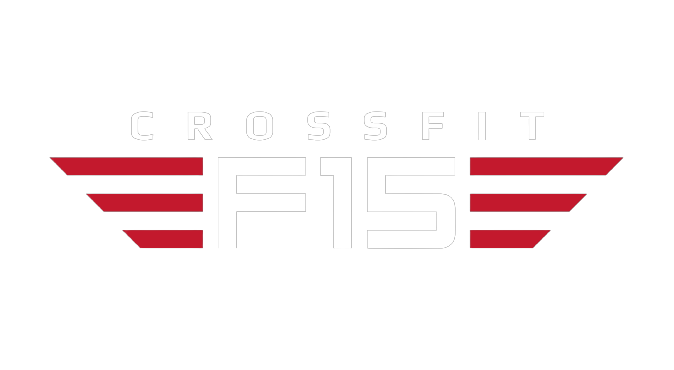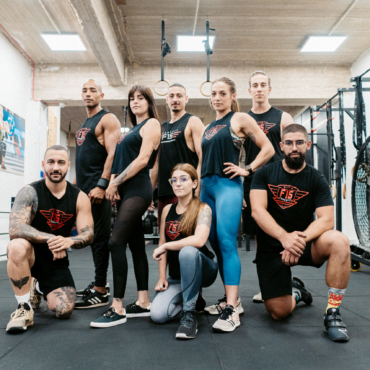Crossfit in malta improve your recovery. Many athletes tend to focus too much on building muscles during training. By trying to get a good result in the shortest possible time, they multiply their efforts. Their mistake is that they neglect muscle recovery. But recovery is essential, especially after intense work. In this article, you will discover the importance of muscle recovery and how to speed it up. https://www.instagram.com/crossfitf15

The importance of muscle recovery after training
When an athlete makes progress, his only goal is to train harder to make more progress. However, without good muscle recovery, his efforts will be in vain.
What happens during the effort?
The physical efforts made during training cause damage to the muscle fibres. These are mainly micro tears and micro traumas suffered by the myofibrils due to an unusual strain on the muscles. These micro-injuries are sometimes painless. However, they can also manifest themselves as aches and pains or cramps.
After physical activity, the muscle also produces a large amount of toxins as a result of chemical reactions. In addition to all this, the intense efforts lead to a depletion of energy reserves. Only a good muscle recovery enables sportsmen and women to remedy all these problems. It is also essential for optimising muscle growth.
What happens during muscle recovery?
It is during the recovery phase that the muscles rebuild themselves. First of all, they heal from micro-injuries that occur during training. The muscle fibres then become more resistant and increase in volume as the number and size of myofibrils increase. Thanks to this process, the muscles will be able to overcome the various stresses caused by physical exertion.
The risk of aches and cramps is increasingly reduced. It should also be noted that it is during the recovery phase that the restoration of intracellular fluids takes place. The muscle fibres will absorb nutrients and water, allowing the muscles to recover all the energy consumed during training. This also optimizes muscle “volumization”.
The evacuation of toxins also takes place during the muscle recovery phase. The waste generated by physical activity can cause inflammation and increased acidity in the body. All this prevents muscle development and has a negative effect on the body. Finally, recovery also promotes the smooth progress of protein synthesis. It increases by more than 50%, which allows the recovery of tissues and muscle hypertrophy.
What are the consequences of insufficient recovery?
Neglecting the recovery phase means reducing to nothing the products of the efforts made during training and also exposing oneself to multiple dangers. First of all, insufficient recovery leads to sagging muscles, increased risk of injury and fatigue. It also leads to water retention, weakened immune defences, increased heart rate during rest and insomnia.
Added to all this is the loss of motivation. It must be emphasized that progress is not achieved by simply making efforts. A good recovery is also required. When this is insufficient, the result is poor. This is likely to cause a loss of motivation. Why do you have to work hard and suffer for hours at the gym if you can’t reach the goal?
The right methods to improve muscle recovery
An athlete who wants to make progress and avoid injury and muscle fatigue has an interest in improving his or her muscle recovery. Here are some effective methods that athletes can apply.
Stretching at the end of a session
Stretching allows the muscles to recover the loss of amplitude generated by physical activity. When done correctly, they also promote venous drainage and the elimination of muscle tension. That said, things must be done correctly. Thus, it is recommended to opt for passive stretching. In addition, a few conditions must be met.
First of all, stretching at the end of the session is not recommended. You should wait at least 30 minutes, the time for the muscles to relax a little, before starting. In addition, moderate and progressive stretching should be done. In other words, athletes must listen to their bodies. Intense stretching can only optimize the micro-lesions generated by the physical efforts made during training. Finally, the movements to be done should be chosen according to the physical activity performed.
A little muscle massage could also optimize recovery. By massaging the muscles worked during training, it is possible to alleviate aches and pains, prevent them from shrinking and increase comfort.
Stay well hydrated during recovery
During training, the body sweats in order to evacuate toxins. So there’s a fairly significant loss of water. Good hydration is necessary to eliminate the toxins accumulated during the effort and to ensure a rebalancing of the pH in the body. It is also a way to compensate for water and mineral losses and to reduce the risk of cramps or increased heart rate.
How to hydrate properly? First of all, you should drink small quantities. In fact, the ideal is to limit yourself to 150 ml or 250 ml per intake, every 15 minutes. What type of drink should I choose? In reality, it all depends on the duration of training. In case of intense efforts during 1 hour or 1 hour and a half, drinking still water is sufficient. For longer training sessions, however, it is important to drink water rich in minerals and electrolytes.
A good post-training diet
Immediately after exercise, a good diet is essential to help rebuild muscles and rebuild glycogen reserves. It is essential to eat foods rich in fructose or glucose. This is the case with fruits such as citrus fruits and bananas and oilseeds. Snacks such as protein shakers or protein bars are also required.
Rest and quality sleep
For successful muscle recovery, you need plenty of rest. Therefore, after training, it is not recommended to do physical activities that are too tiring. Restorative and recuperative sleep is also essential to optimize muscle recovery. You should therefore know that you need to sleep 7 to 9 hours a night. In addition, it is recommended to go to bed and wake up at regular hours.
To improve the quality of sleep, avoid exposure to blue light in the evening. Therefore, turning off smartphones and computers is required. It is also important to avoid taking caffeine after 2 p.m. Finally, if you have trouble falling asleep, do deep breathing exercises.
Eating well every day
The daily menu, especially after physical activity, should be chosen with care. It should include starchy foods that are real sources of energy. This is the case with brown rice, sweet potatoes and oats. Protein-rich foods are also necessary, such as fish, eggs, lentils and peas. Don’t forget green and fresh vegetables with anti-inflammatory properties such as spinach, broccoli and cabbage.
Good fats are also essential. They are found in almonds, avocado, walnuts and olive oil. Finally, to promote the restocking of glycogen, a little caffeine would be necessary.
Take a cold shower or do cryotherapy
To heal from micro-injuries caused by intense physical effort, taking a cold shower is a good idea. The idea is to expose the muscles to the cold in order to promote the circulation of oxygen and accelerate their arrival in the muscle cells. It is also an excellent way to eliminate pain caused by aches and cramps. Professional athletes even prefer a short cryotherapy session
Also called cold therapy, cryotherapy has been practiced for ages. According to many studies, it allows a fast reconstruction of the muscles, a repair of the damaged cells and an attenuation of the pains. Cryotherapy is also a major ally in the fight against vasoconstriction, inflammations and the appearance of oedemas.
Taking dietary supplements
Dietary supplements are great allies in promoting muscle recovery and also increase muscle volume. After intense efforts, therefore, taking protein powder supplements is a good idea. They promote the smooth progress of protein synthesis. Taking Omega 3 supplements is also recommended. Some athletes opt for products derived from the combination of different amino acids such as BCAA’s.
Filling up with magnesium is also a way of achieving better recovery. Do not forget to eat super foods such as spirulina. These are real sources of nutrients and energy.
Good training planning
Daily training is not recommended. You should rest every other day. For example, you can train on Monday and Tuesday and rest on Wednesday. Of course, this training plan can be modified according to the physical activity to be done. For sportsmen and women who want to dry out, active recovery is a good idea.
This consists of physical activities that promote blood circulation and the restoration of glycogen. This is the case with light jogging, cycling, swimming and elliptical biking. Besides that, no matter what your goal is and how much you want to improve in no time, it’s best to limit yourself to 4 training sessions per week. Be aware that overtraining causes serious damage, including acute and persistent pain and a weakened immune system.
Join crossfit F15 in Malta and be guided by professionals
Check out our crossfit programming: https://www.facebook.com/F15Performance/
Check out our membership to get started with us: https://www.crossfitf15.com/membership/




Add Comment